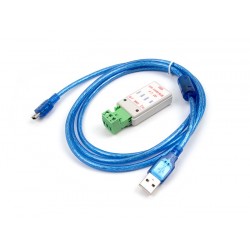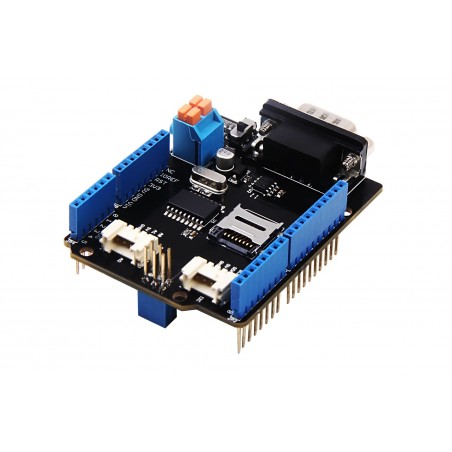







O CAN-BUS é um protocolo industrial comum devido ao bom funcionamento em longas distâncias, velocidade média de comunicação e alta fiabilidade. A CAN-BUS Shield V2 usa o MCP2515 como controlador CAN-BUS e MCP2551 como tradutor CAN. Testada com Arduino UNO (ATmega328), Arduino Mega (ATmega1280 / 2560), bem como Arduino Leonardo (ATmega32U4) e LinkIt One.
DESCRIÇÃO EM PORTUGUÊS BREVEMENTE DISPONÍVEL
Se tiver alguma dúvida neste produto não hesite em contactar-nos.
*Atenção: as imagens são meramente ilustrativas.
Hacking vehicles becomes easy with CAN BUS and Arduino! CAN-BUS Shield which adopts MCP2515 CAN-BUS controller with SPI interface and MCP2551 CAN transceiver to give you Arduino/Seeeduino CAN-BUS capability. With the help of CAN-BUS Shield, you can use easily interact with your car by using Arduino boards.
CAN-BUS is a common industrial bus because of its long travel distance, medium communication speed, and high reliability. It is commonly found on modern machine tools and as an automotive diagnostic bus.
CAN-BUS Shield Work well with Arduino UNO (ATmega328), Arduino Mega (ATmega1280/2560) as well as Arduino Leonardo (ATmega32U4) and LinkIt One, if you want to use it with the others board, please contact us for more details.
| Seeeduino V4.2 | Arduino UNO | Arduino Mega | Arduino Leonardo | |
| CAN-Bus Shield V2 | Compatible | Compatible | Compatible | Compatible |
Previously we have made two versions of CAN-BUS Shield, V1.0, and V1.2. They are all awesome shields that widely liked by our users. In order to make it better, several months ago we conducted a survey about CAN-BUS Shield V1.2 and received much valuable advice (Thanks to all the users who replied to us), so we decided to make an update and here it is - CAN-BUS Shield V2.
| Features | V1.2 | V2.0 |
| CAN-BUS Controller | MCP2515 | MCP2515 |
| CAN Transceiver | MCP2551 | MCP2551 |
| Default OBD Pinout | OBD-II Standard | OBD-II Standard |
| CAN Standard Pinout | Not compatible | Compatible (jumper) |
| INT Pin | Not changeable | D2 or D3 (jumper) |
| CS pin for TF card slot | No TF card slot | D4 or D5 (jumper) |
| P1 pad | Front of the shied | Back of the shield |
| Serial Grove | D0/D1 | A0/A1 |
| I2C Grove | A4/A5 | SDA/SCL |
| Grove Orientation | Vertical | Horizontal |

Consider that the D0/D1 pin is usually used for downloading code, we changed the serial Grove connector to pin A0/A1. The I2C Grove connector is also changed to a more reasonable standard SDA/SCL pins instead of the previous A4/A5. The two Grove connectors are both changed to horizontal rather than vertical to the shield so that it would be more convenient when connecting to other grove modules.
If you want a CAN BUS function for other MCU, please try the Serial CAN-BUS module.
If your project is space limited, here is a Serial CAN-BUS($14.90) module which has the full features of CAN Bus. The Serial CAN-BUS provides your Arduino or other MCU with the capability of communication to CAN Bus, such as hacking your vehicle. This Grove CAN-BUS module is controlled by UART, which means if your MCU has a UART interface, this serial CAN-BUS is available.
If you want to record the GPS log at the same time, this OBD-II CAN Bus GPS Development Kit is recommended.
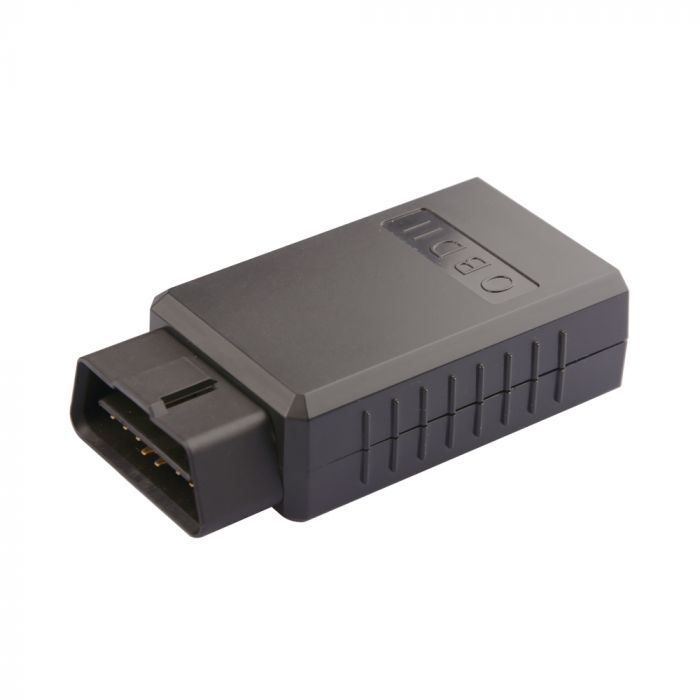
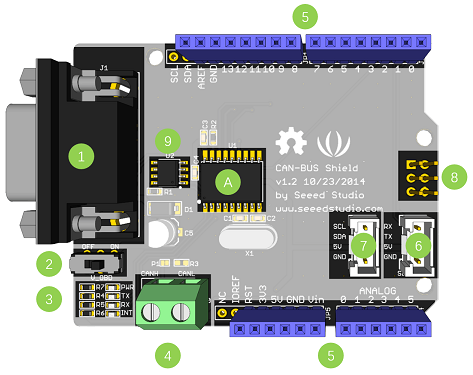
Technical details
| Dimensions | 74.8mm x53.4mm x27.1mm |
| Weight | G.W 48g |
| Battery | Exclude |
Part List
| CAN-BUS Shield V2 | 1 |
Produtos Associados
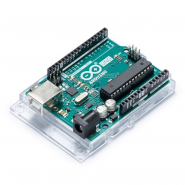

O CAN-BUS é um protocolo industrial comum devido ao bom funcionamento em longas distâncias, velocidade média de comunicação e alta fiabilidade. A CAN-BUS Shield V2 usa o MCP2515 como controlador CAN-BUS e MCP2551 como tradutor CAN. Testada com Arduino UNO (ATmega328), Arduino Mega (ATmega1280 / 2560), bem como Arduino Leonardo (ATmega32U4) e LinkIt One.




